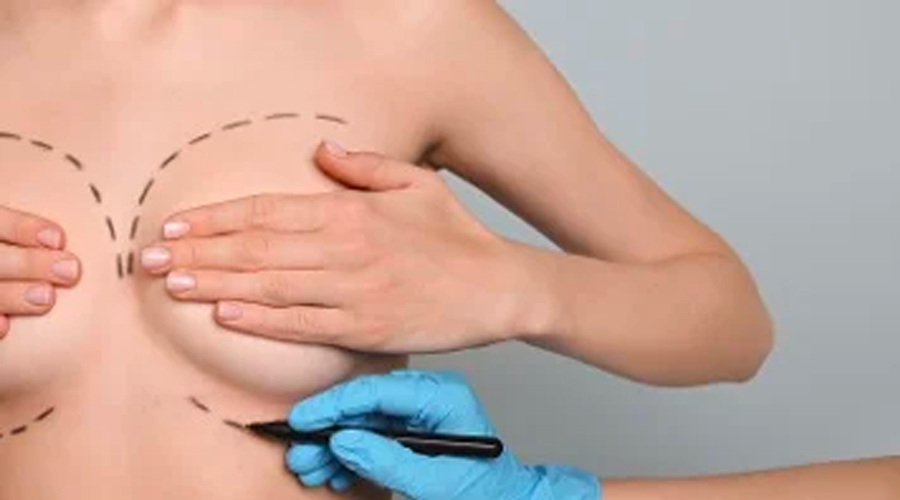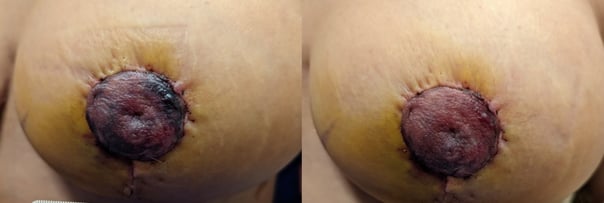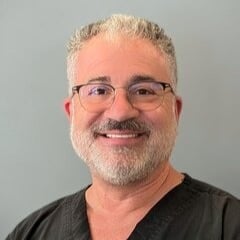For decades, avascular necrosis (AVN) of the femoral head was regarded as a degenerative...
Use of Hyperbaric Oxygen Therapy for Compromised Skin Grafts and Flaps in Breast Reconstruction

It seems like breast cancer is everywhere. In fact, breast cancer is now affecting 1 in 8 women and 1 in 800 men in the United States. Treatment options for breast cancer vary based on the type of cancer and its stage, which refers to whether it is localized to a small area or has spread to other regions. There are local treatment options like surgery and radiation therapy, as well as systemic therapies such as chemotherapy, hormone therapy, targeted drug therapy, and immunotherapy. Less common, is targeting the cancer through metabolic therapy. Surgical options include: lumpectomy (removing the tumor only) and a full mastectomy (removing the entire breast).
In our practice, we often work with men and women who have undergone a mastectomy with breast reconstruction to both treat the cancer and achieve an aesthetic result. Breast reconstruction attempts to restore a breast to a normal shape and appearance often involves the use of tissue flaps and skin grafts. In doing so, we occasionally find regions of this tissue that are not receiving adequate blood supply and, as a result, become ischemic. At Hyperbaric Medical Solutions we expeditiously evaluate patients and, begin treatment with hyperbaric oxygen therapy as soon as possible. The goal is to salvage these compromised tissue flaps and skin graft complications, avoid additional surgery, and help achieve complete healing of the wound with the desired aesthetic appearance.

Post breast reconstruction: Left image - immediately post-operation with tissue compromise (see 2 o clock position). Right image -excellent response to first emergent post operative HBOT session.
This month we treated a woman post breast reconstruction that resulted in compromised tissue around the nipple that prevented proper healing. The patient's plastic surgeon referred her to us for hyperbaric oxygen therapy (HBOT). The area was quite damaged with ischemic tissue, yet after just one session of HBOT, the tissue became pinkish and showed marked improvement. Patients like this one will generally come to us for 7-10 sessions to achieve optimal results.
Hyperbaric oxygen therapy increases the amount of oxygen carried in the blood stream, enabling more oxygen to dissolve into our bodies’ tissues. STEM cell release is stimulated, mitochondrial function is enhanced, ischemia-reperfusion injury is inhibited, and new blood vessels are formed.
Since originally reported in the British Journal of Plastic Surgery by Perrins in 1966, multiple favorable clinical studies have been reported. In 2014, Zhou reported the results of a large review of randomized controlled trials. A flap survival rate of 62.5-100% was reported for HBOT treatment compared to 35-86.6% in the control group.
Recently, Spruijt published in Diving and Hyperbaric Medicine the results of a large case series that found by using HBOT for an ischemic breast flap, 58% of the time no additional operation was required.
For the best results, your surgeon must make all attempts to treat a compromised skin graft or failed flap as soon as it is recognized, including an urgent referral to a hyperbaric specialist.
As referenced earlier, during our initial evaluation of a patient, we will assess the severity of the tissue damage through clinical observation, discussion with the referring surgeon, and reviewing the results of testing such as a transcutaneous oxygen monitor (TCOM) results or laser doppler. This helps us to determine the most efficacious hyperbaric protocol to use. Additionally, there is constant communication with the plastic surgeon, or referring physician, on the status and progress of their patients we see for hyperbaric oxygen therapy. Most patients will require approximately two weeks of hyperbaric treatment to achieve full and optimal results.

Written by Alan Katz, MD, FUHM, FACEP, FAAEM
Dr. Alan Katz, National Medical Director of Hyperbaric Medical Solutions (HMS), is double board certified in Emergency Medicine and Hyperbaric Medicine. He directs clinical operations, education and research initiatives, and the integration of other regenerative medicine therapies....
Read More


